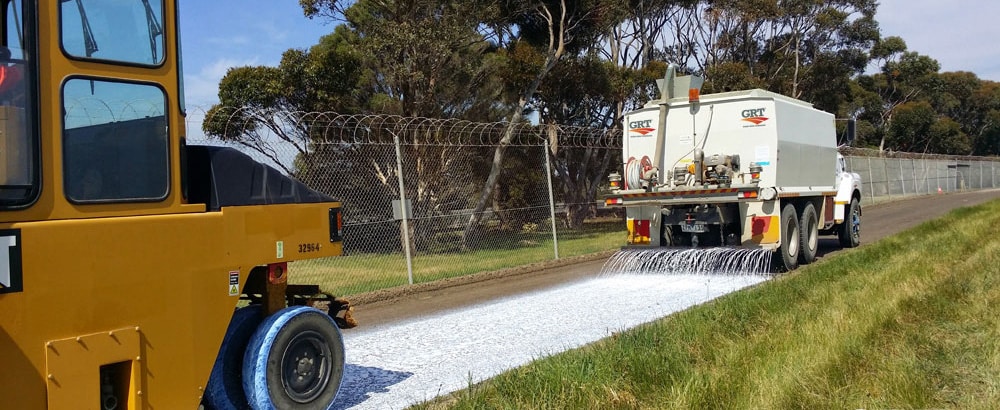
The stabilized soils have a higher strength, lower permeability and lower compressibility than the native soil. This is accomplished through chemical reactions between soil binder (cementitious material) and soil minerals (pozzolanic materials). Cementitious materials are cement, lime, fly ash or combination of these.
Cement is the oldest soil binder. It may be considered as primary stabilizing agent or hydraulic binder since it can be used alone to achieve stabilizing affect. Hydration process starts when cement is mixed with water and other components resulting in hardening of mixture. The hardening (setting) of cement will interconnect soil particles as glue. Cement hydration is a complex process with a series of unknown chemical reactions. This process depends on the presence of foreign matters or impurities, water-cement ratio, curing temperature, presence of additives and specific surface of the mixture. Therefore, the ultimate effect on setting and gain in strength of cement stabilized soil may vary.
Lime application results in an increase in strength due to cation exchange capacity rather than cementing effect caused by pozzolanic reaction. Clay soils become drier and less susceptible to water content changes. Quicklime is the most commonly used lime primarily due to higher available free lime content per unit mass. Quicklime in contact with wet soils, immediately takes up to 32% of its own weight of water from the surrounding soil to form hydrated lime. Pozzolana materials react with lime in presence of water to produce cementitious compounds.
Fly ash is a byproduct of coal fired power generation facilities. Most of the fly ashes belong to secondary soil binder group; these binders cannot lead to hardening on their own. They need activator to form cementitious compounds. Soil to be stabilized should have less moisture content and thus dewatering may be required. Fly ash contains heavy metals and other harmful compounds which leach easily into soil and water bodies and thus negatively affect humans, animals and plants.
Soil binder application with more certain outcome than when cement used, with less water demand than for lime stabilization and far more environment-friendly than fly ash, is designed by Global Road Technology. GRT soil binder is polymer-based without possibly harmful leachate to environment. It can be applied in all types of soils and under extreme climate conditions. Global Road Technology developed different types of soil binders designed for specific needs:
Erosion control – GRT-Enviro Soil Binder is an organic soil conditioner which can be added to irrigation water to reduce soil erosion by agglomerating fine particles that otherwise would be carried away by surface water runoff.
Revegetation – GRT Nature Plus is a specially formulated liquid polymer combined with a highly effective source of phosphorus and nitrogen to increase germination and strike rate. Applied over exposed areas and batters, GRT Nature Plus will lock the seed in place creating ideal growing conditions by retaining moisture levels in the soil and providing the nutrients needed for germination.
Pavement improvement – Polymer Cement Modifier (PCM) used in combination with traditional cementitious stabilizing agents that are currently used in road construction overcome the shortcomings and improve properties of using cementitious materials alone. GRT’s PCM, not only reduces shrinkage cracking but can also provide increased compressive strength and reduced water demand.
For more information regarding Global Road Technology or soil binder stabilization please contact GRT.
Are environmental regulations, health and safety concerns or potential profit loss a concern right now?
Contact Us Now